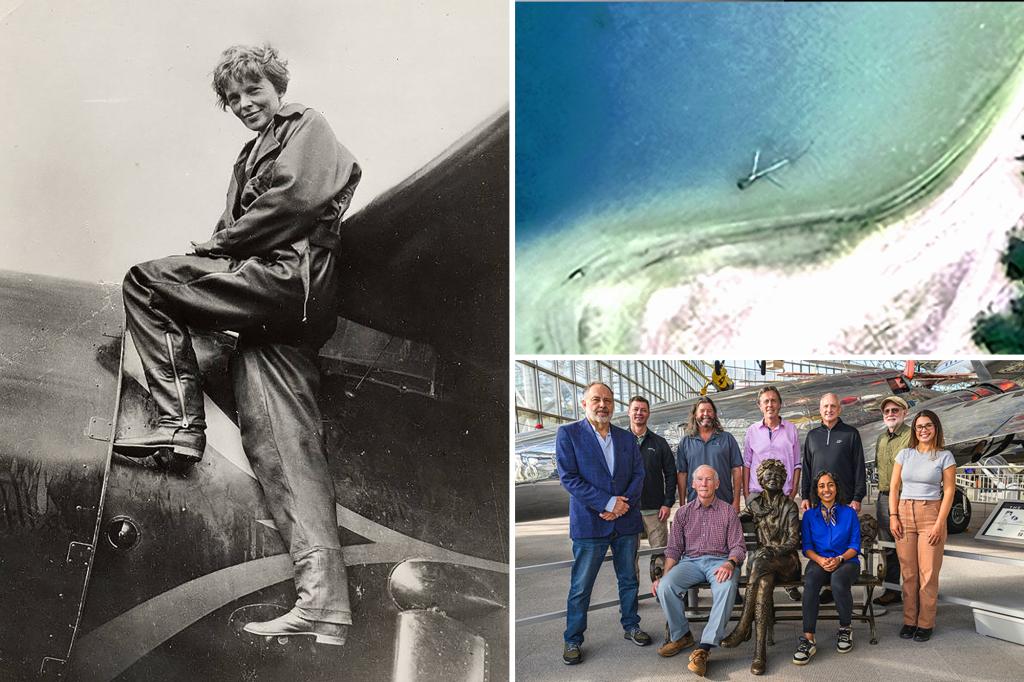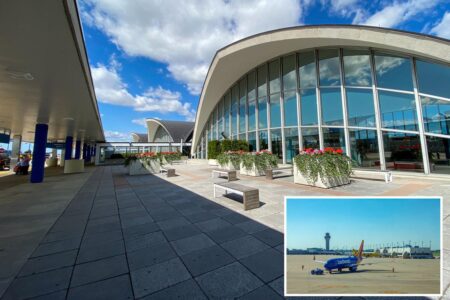Newly discovered aerial photos taken in 1938 of a mysterious anomaly on a remote island in the South Pacific provide “very strong” evidence that it may be Amelia Earhart’s missing plane, researchers claim.
Footage of the strange metallic sight located underwater in a lagoon on the island of Nikumaroro — captured a year after the pioneer aviator disappeared 88 years ago — now bolsters scientists’ belief that the “Taraia Object” is Earhart’s legendary Lockheed 10-E Electra, Purdue University announced.
A 15-person crew — made up of researchers from Purdue and the Archeological Legacy Institute (ALI) — will set off on Nov. 4 for the island, located between Hawaii and Fiji near the center of the Pacific Ocean, to investigate the enigmatic find, believed to be the main body and tail of the missing aircraft.
“Finding Amelia Earhart’s aircraft would be the discovery of a lifetime,” ALI executive director Dr. Richard Pettigrew, who has long believed that Nikumaroro hides the secret to Earhart’s disappearance.
“Other evidence already collected by The International Group of Historic Aircraft Recovery establishes an extremely persuasive, multifaceted case that the final destination for Earhart and her navigator, Fred Noonan, was on Nikumaroro. Confirming the plane wreckage there would be the smoking-gun proof.”
The three-week expedition will zero in on the “Taria Object” — a mysterious shape first spotted in 2015 satellite images on the north shore of the Nikumaroro lagoon.
The search team is due back on Nov. 21.
“A successful identification would be the first step toward fulfilling Amelia’s original plan to return the Electra to West Lafayette after her historic flight,” Steve Schultz, senior vice president and general counsel at Purdue University, said.
“Additional work would still be needed to accomplish that objective, but we feel we own it to her legacy which remains so strong at Purdue, to try to find a way to bring it home.”
The pioneer aviator, who began working at Purdue in 1935, disappeared with her flight navigator, Fred Noonan, on July 2, 1937, during her historic ill-fated attempt to fly around the world.
The pair set off from Lae, Papua New Guinea, with plans to refuel on Howland Island before continuing their journey to Honolulu and their final destination of Oakland, Calif, but faced a strong headwind in Lae when Earhart‚Äôs radio transmissions eventually went silent.¬Ý
The US Navy and Coast Guard conducted¬Ýa 16-day search¬Ýfor the missing duo without success, and Earhart was officially declared dead on Jan. 5, 1939.¬Ý
Despite¬Ýmany attempts and millions of dollars spent¬Ýover nine decades, neither Earhart‚Äôs remains nor the wreckage of her plane have ever been located ‚Äì with the latest million-dollar expedition by Tony Romeo and his Deep Sea Vision team¬Ýdebunked last year.
Romero, a South Carolina-based deep-sea explorer, captured a sonar image of an aircraft-shaped object he believed was Earhart‚Äôs plane in the Pacific Ocean, which was later confirmed to be a rock formation.¬Ý
Last month, President Trump announced he would declassify and release government records tied to Earhart and her final flight.
Read the full article here














